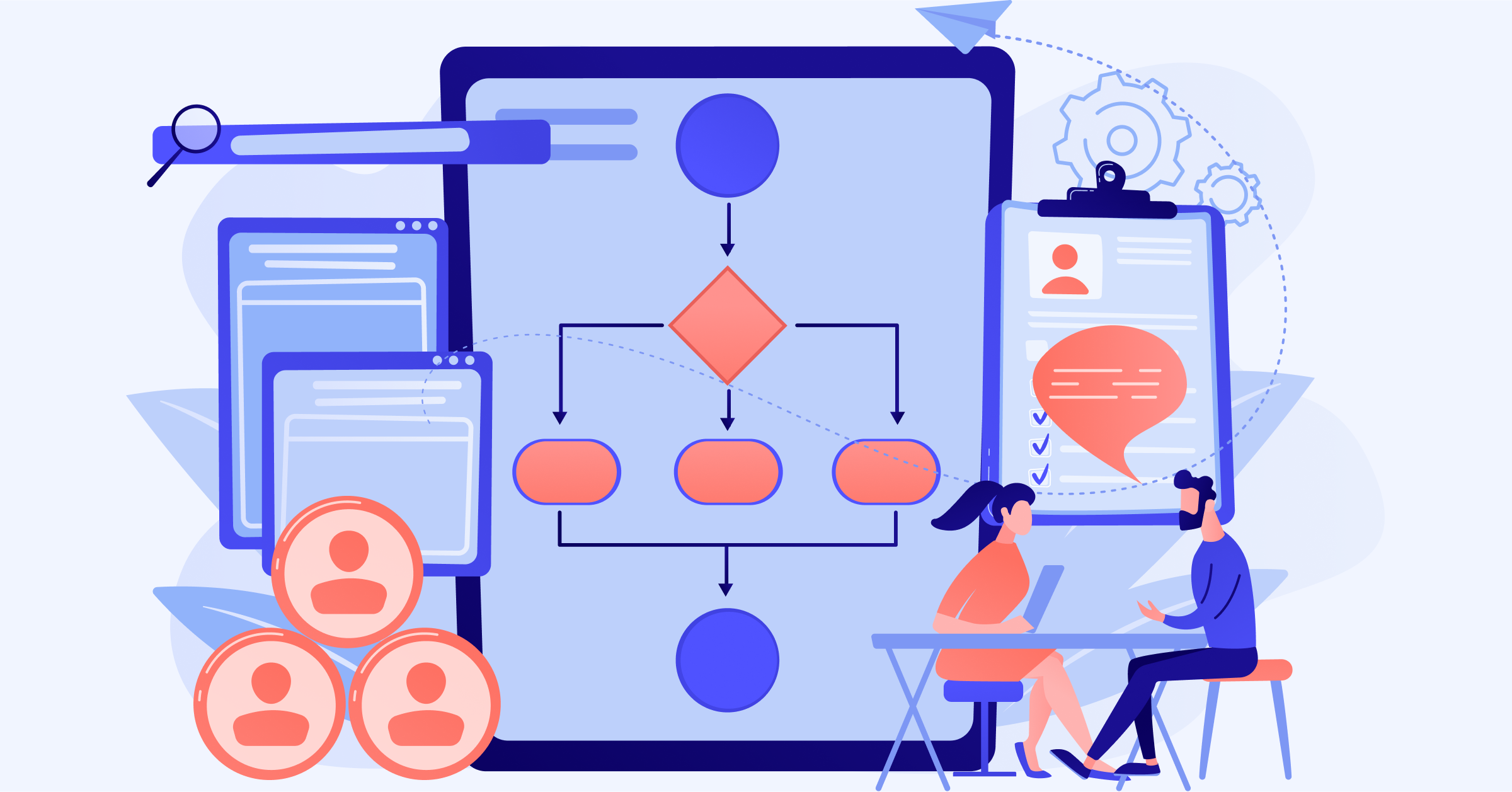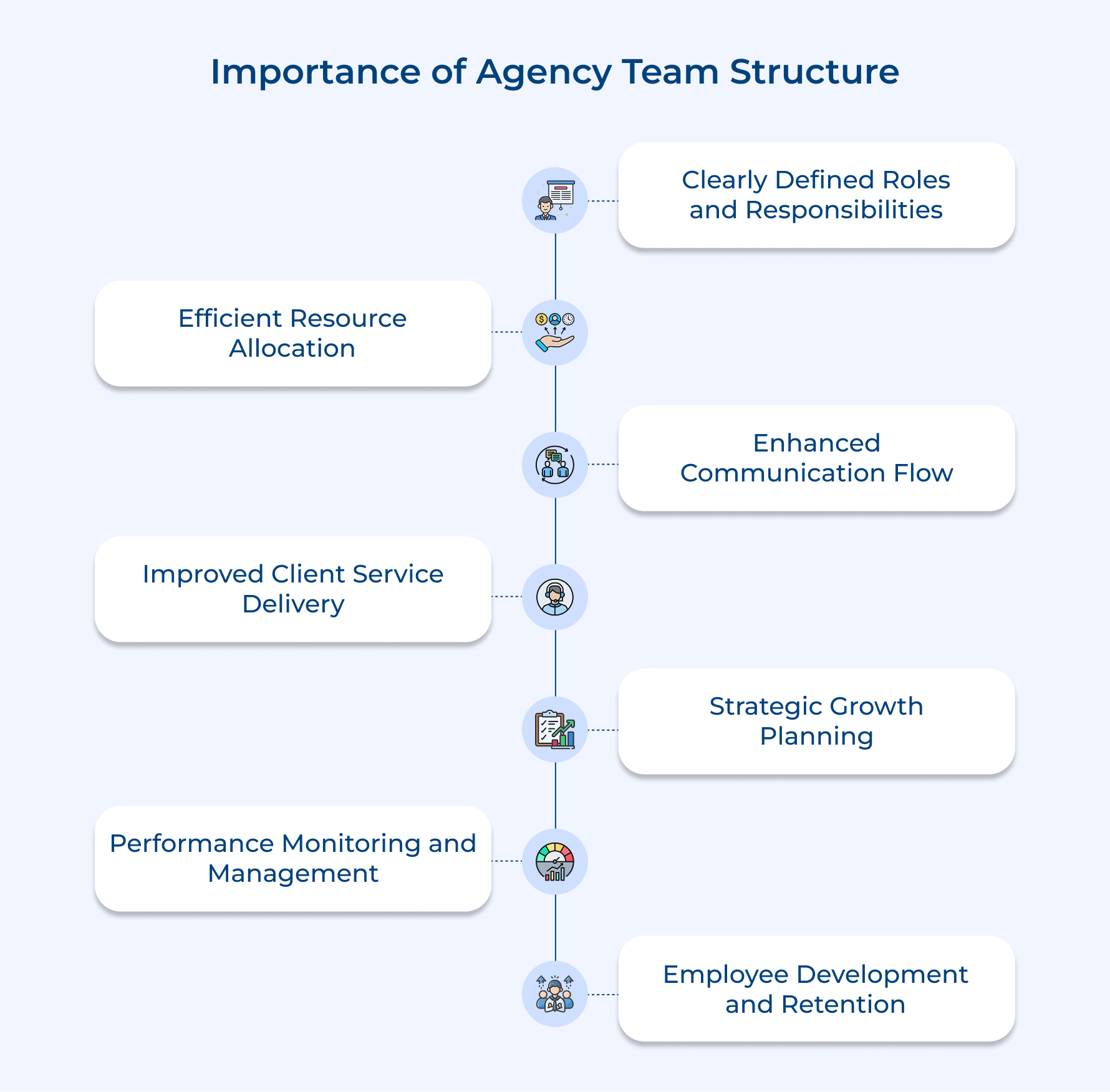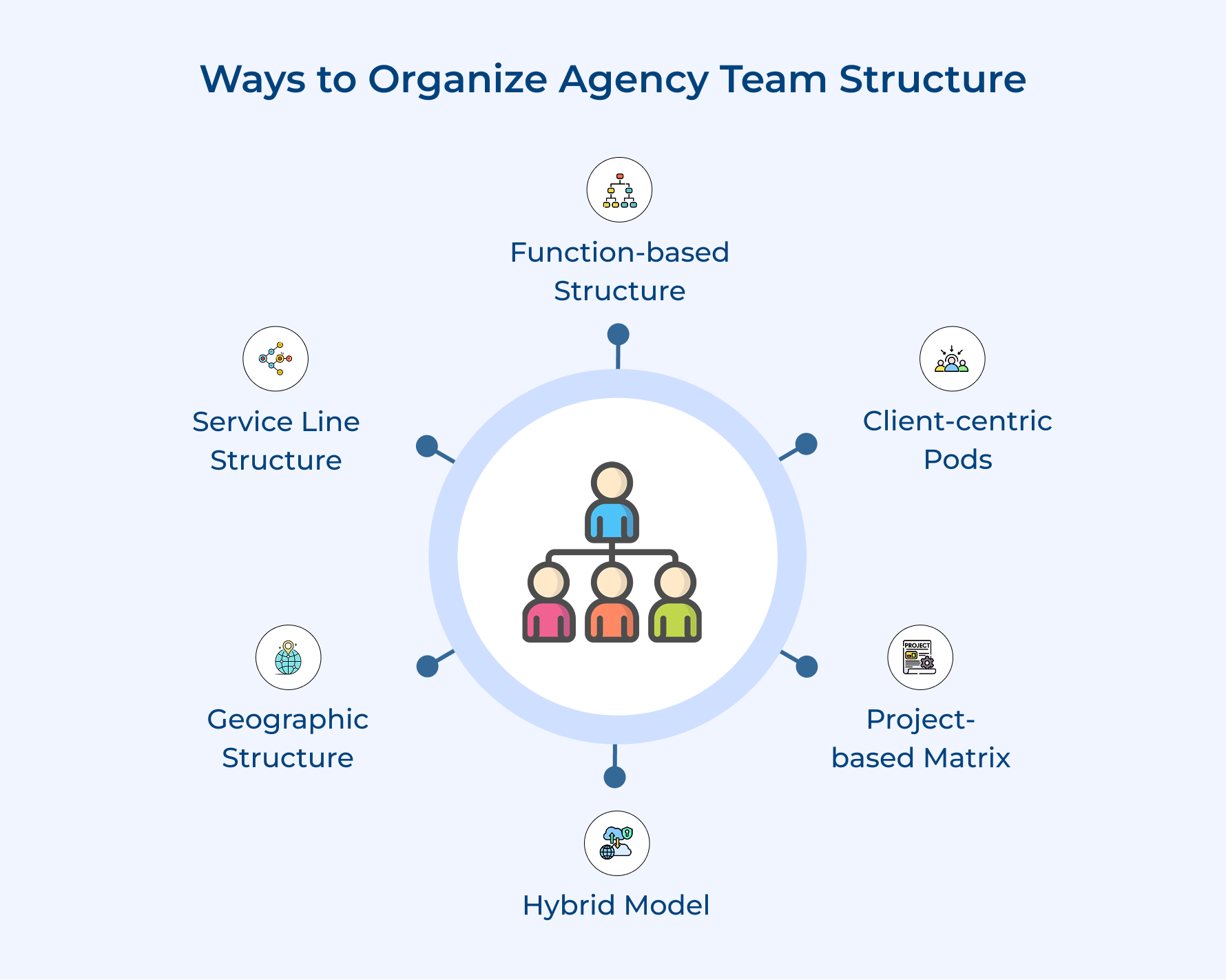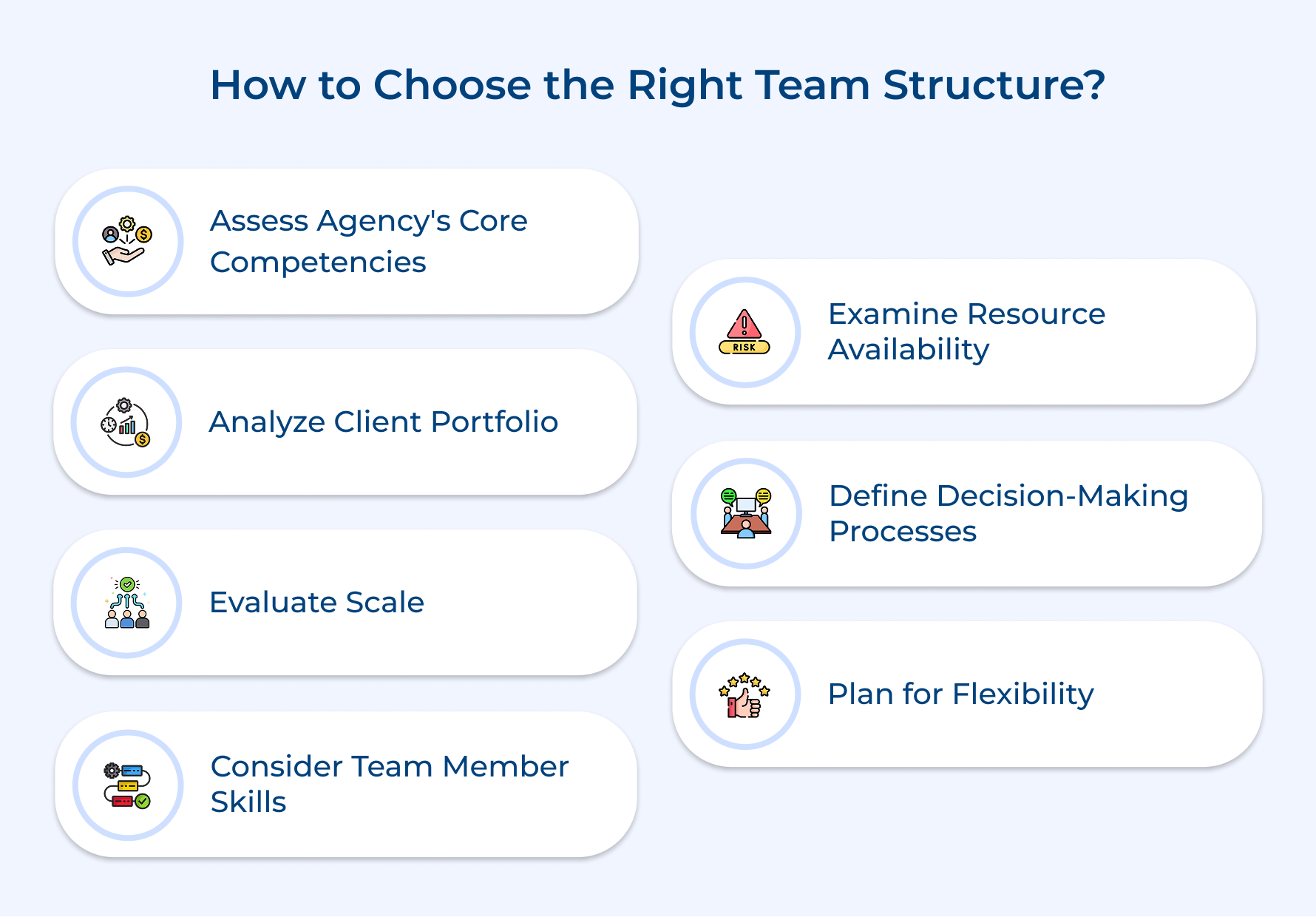A Complete Guide to Understanding Agency Structure

Key Highlights:
- A well-planned agency structure enhances teamwork, ensuring clear roles, smooth workflows, and efficient resource allocation for better project execution.
- Strong communication channels within an agency minimize misunderstandings and accelerate decision-making for seamless client service delivery.
- Adapting your agency’s team structure to evolving client needs and market trends builds long-term business success.
Many agencies struggle with inefficient workflows, miscommunication, and missed opportunities simply because there’s no clear structure in place. When teams don’t have a well-defined framework to follow, projects get delayed, productivity dips, and collaboration becomes a challenge.
However, there’s good news! A structured approach can turn things around. In this blog, we’ll explore how a well-organized, scalable framework can help agencies streamline operations, improve communication, and create a smoother path to success.
What is an Agency Structure?
An agency structure refers to the organizational framework within an agency that defines roles, responsibilities, and how different departments collaborate to achieve common goals. This effectively captures agency structure meaning. It typically includes various levels of management, from senior leadership to specialized staff, with clear divisions for creative, strategic, operational, and client-facing roles.
A clear structure helps to assign specific roles and responsibilities to individuals, preventing overlap as well as confusion. It also allows for streamlined workflows and the ability to scale operations as the business grows.
Key objectives:
- Operational efficiency: Streamline workflows and processes to maximize productivity as well as minimize resource wastage while maintaining high-quality output.
- Client-centricity: Enable teams to respond swiftly to client needs, maintain strong relationships, and deliver consistent value across all touchpoints.
- Talent optimization: Create clear career paths, facilitate skill development, and ensure optimal utilization of team members’ expertise as well as capabilities.
Importance of Agency Team Structure
A well-structured agency team is the foundation for seamless collaboration, efficiency, and growth. Let’s explore why the team structure is important and how it helps.
- Clearly Defined Roles and Responsibilities
When everyone knows exactly what they’re responsible for, there’s no confusion about who handles what. A well-structured agency eliminates overlapping efforts, reduces chaos, and keeps accountability in check at every level.
- Efficient Resource Allocation
A strong team structure ensures that resources (both people and tools) are used wisely. Managers can spot skill gaps, balance workloads effectively, and make sure the right tasks land in the right hands at the right time.
- Enhanced Communication Flow
Good structure means clear communication. With defined channels between teams, information flows smoothly, decisions happen faster, and misunderstandings are kept to a minimum.
- Improved Client Service Delivery
When teams work in sync, clients notice the difference. A well-organized agency delivers consistent, high-quality service, making it easier to meet client expectations and build lasting relationships.
- Strategic Growth Planning
Scaling an agency isn’t just about adding more people, it’s about doing it the right way. A solid team structure lays the foundation for expansion, whether it’s launching new services, entering new markets, or growing your team strategically.
- Performance Monitoring and Management
Tracking performance becomes simple with a structured team. Leaders can easily identify top performers, spot areas for improvement, and create development plans that help the entire agency grow.
- Employee Development and Retention
People want to know where they’re headed. A clear team structure gives employees a sense of direction, opportunities for growth, and a reason to stay. Thus leading to better engagement and lower turnover.
6 Ways to Organize Agency Team Structure
Building a strong agency starts with the right team structure. Here are a few effective agency structure examples that align with different business models, client types and agency goals.
1. Function-based Structure
A function-based structure organizes teams by their professional expertise (creative, strategy, development, and accounts), allowing each department to focus on its core strengths while serving multiple clients. It is ideal for larger agencies that handle multiple clients and require high-quality specialized services.
- Specialized departments: Teams are grouped based on their expertise, such as creative teams, strategy, development, and accounts, ensuring deep specialization as well as efficient problem-solving.
- Led by department heads: Each department is managed by an experienced leader, like a Creative Director for the design team or a Strategy Head for planning. This ensures quality control and expert oversight.
- Clear workflows: Defined processes help teams collaborate seamlessly on client projects while maintaining their focus areas.
- Resource sharing & quality standards: Departments share resources efficiently, ensuring projects meet consistent quality benchmarks.
- Ongoing skill development: Regular department meetings and training sessions keep teams updated on industry trends as well as best practices.
Pro tips:
- Create detailed skill matrices for each function and implement regular training programs to maintain expertise levels.
- Establish clear project collaboration frameworks with defined handoff points and accountability measures.
2. Client-centric Pods
A pod-based structure creates self-contained teams dedicated to specific clients or industries, functioning like mini-agencies with all the necessary skills to handle projects independently. Here’s how it works:
- Dedicated client teams: Each pod includes strategists, creatives, developers, and account managers who work exclusively on a specific client or industry.
- Stronger client relationships: With a single team handling all aspects, clients get a consistent experience and deeper collaboration.
- Faster response times: Pods can make quick decisions and adapt strategies without waiting on approvals from multiple departments.
- Ideal for complex accounts: Best suited for clients requiring deep industry knowledge and highly tailored solutions.
- Balanced skill representation: Each pod should have a mix of essential skills to cover all aspects of the client’s needs.
- Clear leadership & support systems: Assign pod leaders to oversee strategy and execution while setting up support systems for specialized expertise when needed.
- Regular strategy meetings: Frequent check-ins ensure alignment with client goals, continuous improvement, and seamless service delivery.
Pro tips:
- Develop comprehensive client onboarding processes for new pod members to ensure consistent knowledge transfer.
- Implement regular cross-pod knowledge sharing sessions to prevent silos and maintain innovation.
3. Project-based Matrix
A matrix structure allows agencies to form flexible teams based on project needs, pulling specialists from different departments.
For example, a rebranding project may require a branding expert, UX designer, copywriter, and motion graphics artist, who collaborate temporarily before moving to new assignments. This approach maximizes resource efficiency and suits agencies handling diverse projects.
Strong project managers ensure smooth coordination, while skill availability tracking prevents conflicts. Regular monitoring helps optimize performance and adapt quickly. If your agency needs agile, project-specific teams, the matrix model could be the perfect fit for a modern digital agency structure.
Pro tips:
- Build a comprehensive skills database with real-time availability tracking to optimize resource allocation.
- Develop standard project kickoff and closure protocols to ensure smooth team transitions.
4. Hybrid Model
A hybrid structure combines the best of multiple models, blending functional departments, client pods, and project-based teams to create a flexible yet stable agency setup.
- Balanced Flexibility & Stability: This structure adapts to different client needs while maintaining strong expertise centers.
- Functional Departments + Client Pods + Project Teams: Agencies can have stable departments (like creative or strategy) while forming dedicated pods for key clients and assembling project-specific teams when needed.
- Optimized Resource Utilization: Ensures the right talent is allocated efficiently without overburdening teams.
- Stronger Client Relationships: Dedicated pods handle long-term accounts, while specialized teams tackle high-priority projects.
- Defined Coordination Mechanisms: Clear workflows help different structural elements work seamlessly together.
- Regular Monitoring & Adjustments: Agencies should assess the model’s effectiveness and tweak components as needed.
Pro tips:
- Implement clear decision-making protocols for resource conflicts between different structural components.
- Create visual guides and documentation to help team members navigate the complex structure.
5. Geographic Structure
A geographic structure organizes teams by location or market region, allowing agencies to maintain a local presence while tapping into global expertise.
Imagine a marketing agency structure with offices in New York, London, and Singapore. Each office operates semi-independently, tailoring campaigns to its region’s audience while following the agency’s global branding and quality standards.
The approach helps agencies understand local markets better, ensuring cultural relevance while maintaining a unified brand identity. To make it work smoothly, agencies need strong regional leadership, clear cross-regional collaboration protocols, and centralized support functions for consistency. Regular knowledge-sharing between locations ensures best practices and resources are leveraged across markets.
Pro tips:
- Develop strong knowledge management systems to share insights and best practices across locations.
- Create regular cross-regional team connection opportunities to maintain organizational culture.
6. Service Line Structure
A service line structure organizes teams by expertise, with dedicated units for areas like digital marketing, PR, branding, or advertising.
Let’s take an example: an agency has separate teams—one specializing in social media campaigns, another in public relations, and another in performance marketing. Each team hones its skills, delivering top-tier service while maintaining a clear market position.
The setup ensures deep expertise, streamlined processes, and efficient project execution. But how do these teams work together when a client needs an integrated campaign? Agencies must establish cross-service collaboration protocols to ensure seamless execution.
Here, agencies need defined service offerings, strong team leadership, and regular performance monitoring to stay competitive. For agencies with diverse services, this structure enhances expertise and efficiency. Hence, ensuring clients get the best talent for each specialized need, ideal for an advertising agency structure focused on multi-channel delivery.
Pro tips:
- Develop service-specific excellence metrics and regular performance monitoring systems.
- Create standardized processes for cross-service collaboration on integrated client solutions.
How to Choose the Right Team Structure?
Picking the right team structure isn’t a one-size-fits-all decision, it depends on your digital marketing team’s strengths, clients, and growth plans. Here’s how you can build a structure that enhances efficiency and scales with your business.
Assess Your Agency’s Core Competencies
Start by identifying what your agency does best. Are you known for creative services, digital marketing, or strategy consulting?
Mapping your strengths helps shape a structure that maximizes efficiency. If you notice gaps in expertise, this might be the right time to redefine individual teams or bring in new talent to strengthen your services.
Analyze Client Portfolio and Requirements
Your clients play a huge role in structuring your team. Do you work with large, long-term clients or handle multiple smaller projects? Agencies with big accounts might benefit from dedicated account teams, while those with varied clients may prefer flexible, shared-resource teams.
Reviewing client feedback and service patterns can help refine the setup for better collaboration as well as service delivery.
Evaluate Current and Future Scale
Think beyond your current size. Where do you see your agency in a few years? If you plan to expand services, enter new markets, or scale operations, your structure should support this growth.
A scalable framework ensures that when the time comes, you can add new teams, locations, or services without disrupting efficiency.
Consider Team Member Skills and Aspirations
A strong structure isn’t just about operations, it should also support employee development. Take stock of your team’s skills and aspirations.
Mentorship programs, cross-training, and career progression paths help retain top talent while keeping teams engaged as well as motivated. For instance, a social media manager in a digital marketing team may need structured opportunities to explore strategy, analytics, or paid media expertise.
Examine Resource Availability
Your budget, technology, and infrastructure directly impact your agency’s structure. Investing in the right tools can help streamline workflows and improve efficiency.
If it’s collaboration software, automation tools, or training programs, allocating resources wisely ensures smoother operations without overextending your budget. In traditional models, where roles are strictly defined, ensuring access to modern digital tools can enhance productivity and innovation.
Define Clear Decision-Making Processes
A well-structured agency ensures that decision-making is clear and efficient. Do you prefer a centralized system where decisions flow from the top down or a decentralized approach that empowers teams?
Establishing clear approval processes as well as communication channels reduces bottlenecks and helps things move faster.
Plan for Flexibility and Adaptation
Markets change, client needs shift, and internal teams evolve, so your agency structure should be built for flexibility.
Regular reviews, performance tracking, and the ability to adjust teams based on demand will keep your agency competitive. Consider hybrid models that combine different structures for maximum agility.
Ensuring Agency Success with a Clear and Defined Structure
Building a strong agency structure is the secret to smoother workflows, better collaboration, and faster project delivery. When everyone knows their role, tasks get done efficiently, and clients stay happy. A well-organized team doesn’t just handle daily challenges, it sets the stage for long-term success.
Having the right structure would mean that your agency can adapt to new opportunities, scale effortlessly and maintain high-quality standards. If you’re refining existing processes or starting from scratch, investing in a solid framework will ensure your agency thrives well into the future
Limit time — not creativity
Everything you need for customer support, marketing & sales.
Neeti Singh is a passionate content writer at Kooper, where he transforms complex concepts into clear, engaging and actionable content. With a keen eye for detail and a love for technology, Tushar Joshi crafts blog posts, guides and articles that help readers navigate the fast-evolving world of software solutions.


